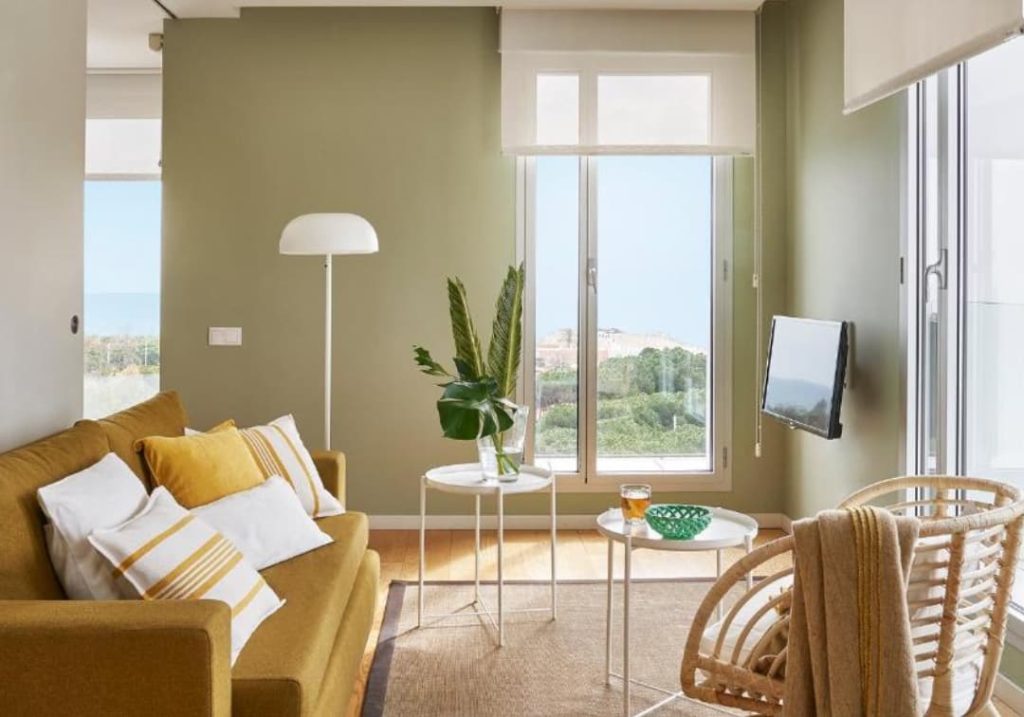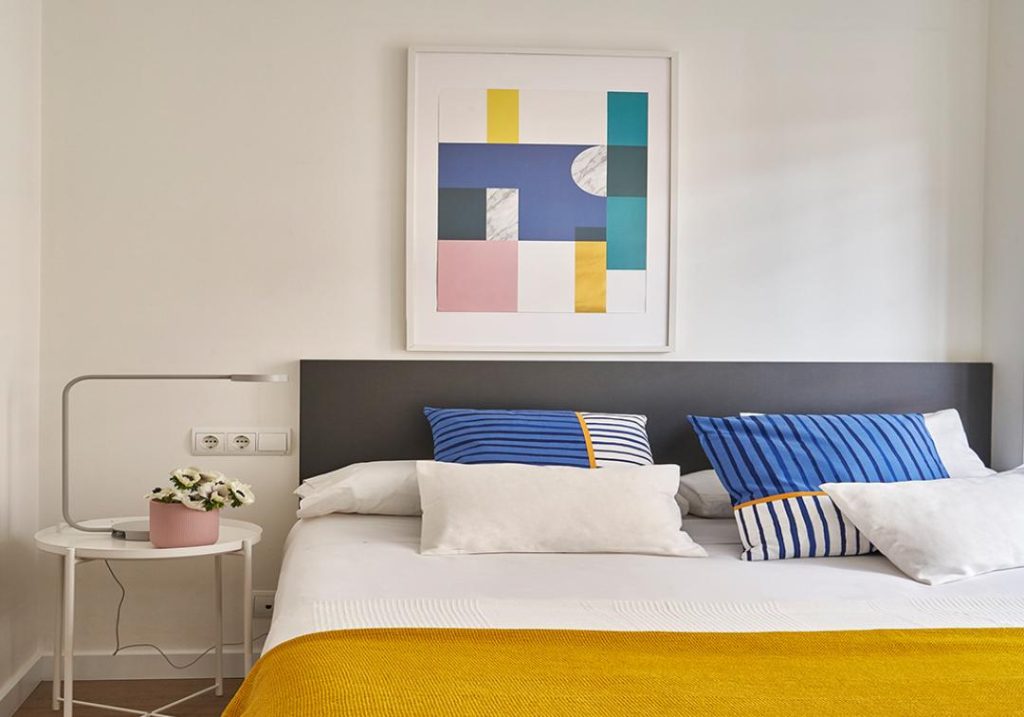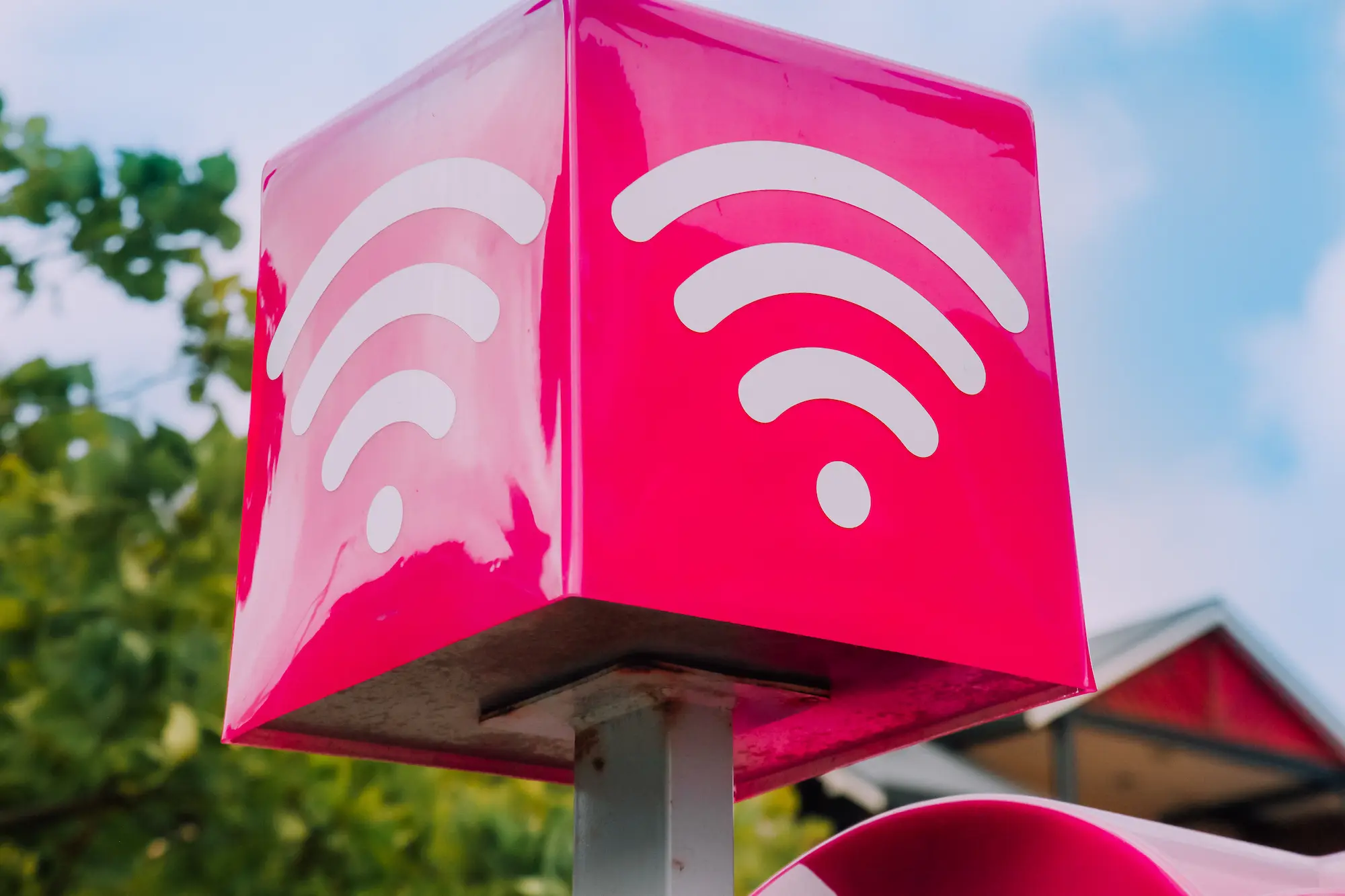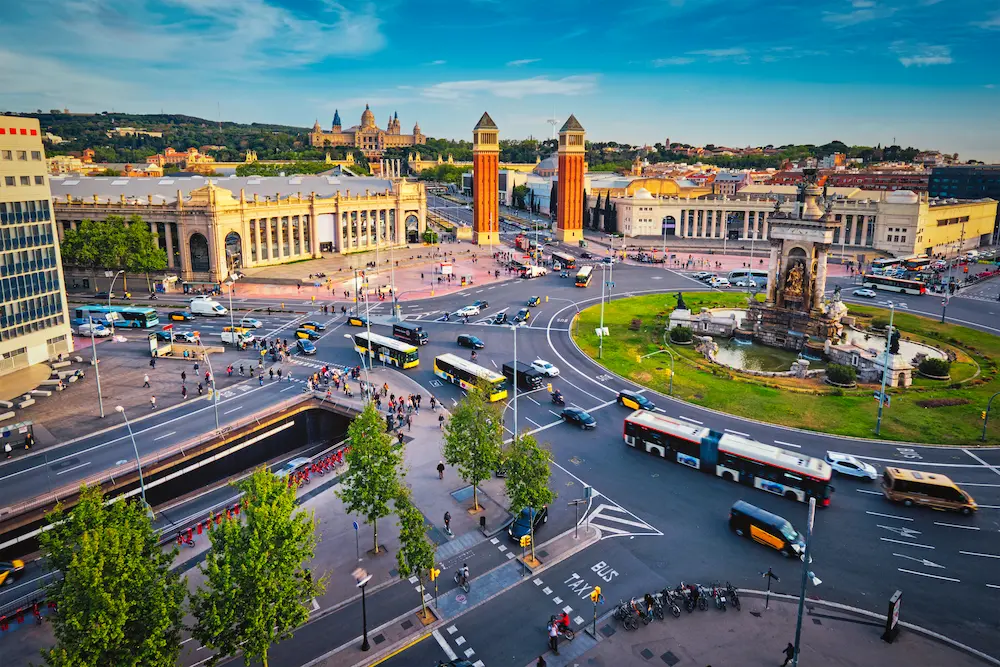- 1 CASA MILÀ (LA PEDRERA)
- 2 CASA BATLLÓ
- 3 LA SAGRADA FAMILIA
- 4 PARK GÜELL
- 5 TORRE BELLESGUARD O CASA FIGUERAS
- 6 CASA VICENS
- 7 PALAU GÜELL
- 8 THE TERESIANAS SCHOOL
- 9 CASA CALVET
- 10 PLAÇA REIAL LAMPPOSTS
- 11 FINCA GÜELL PAVILLIONS
- 12 FOUNTAIN OF HÉRCULES (PALAU DE PEDRALBES)
- 13 PORTAL MIRALLES
- 14 SANT PACIÀ CHURCH MOSAIC
- 15 OTHER PLACES TO SEE GAUDÍ ART IN BARCELONA
One of the great claims of the city of Barcelona is undoubtedly its best-known architect worldwide: Antoni Gaudí. Born in the Catalan city of Reus in 1852, he was one of the most prolific artists of the modernist architectural movement. Although you may know some of his most famous works in the city such as the Sagrada Familia or Park Güell, the truth is that there are many more buildings and monuments that this genius left as a legacy to Barcelona’s heritage. Discover where to see Gaudí art in Barcelona as well as some suggestions to find them.
CASA MILÀ (LA PEDRERA)
Also known as La Pedrera (‘the quarry’ in Catalan), this is one of the most famous and controverted works of art by the architect. Antoni Gaudí projected it in the famous golden square of Passeig de Gràcia in 1906, becoming the last civil building designed by him. One of the biggest attractions to visit Casa Milà is its wonderful roof, flanked by its chimneys with Cappadocian inspiration, and its parabolic arch roof. If you are planning to visit in the summer, you must know that Fundació La Pedrera organizes outdoor concerts on the roof of the building. Learn about the dates if you want to enjoy this monument in a different way! If you want to visit Casa Milà from our beach apartments in Barcelona, you only have to take the metro (lines L2, L3 and L4) to Passeig de Gràcia. You will see it right in front. Remember that it is advisable to buy your ticket in advance so as not to queue at the box office.
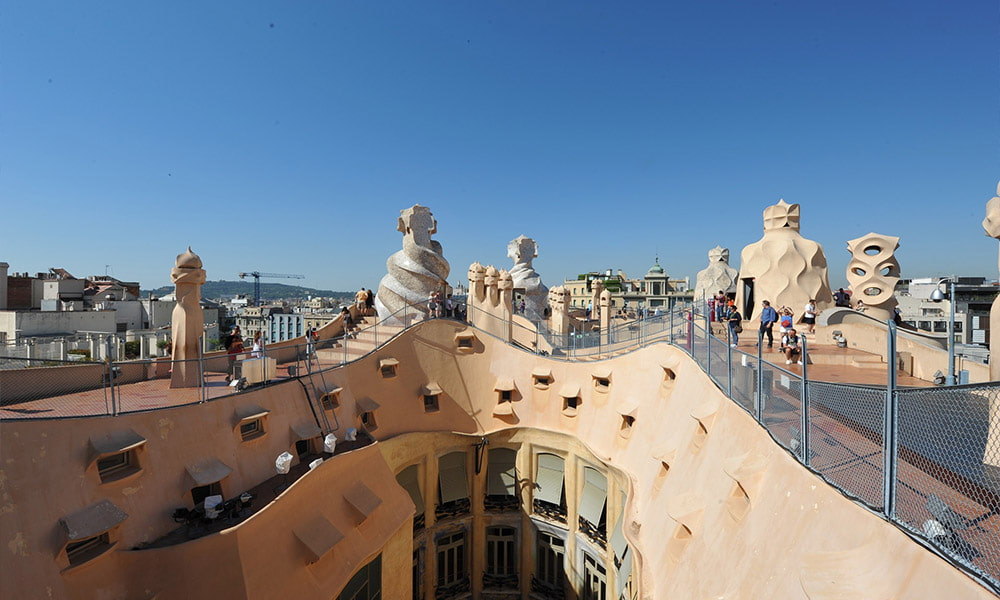
CASA BATLLÓ
One of the most beautiful buildings built by Gaudí for many, Casa Batlló is another essential stop on this Gaudí route of Barcelona. Although much more discreet than La Pedrera, this is another of the great jewels of Paseo de Gràcia. Built between 1904 and 1907, in this building you will find innumerable references to nature: from its bat-shaped windows, through its staircase that evokes a spine, to the top of its facade, which remind us of the scales of a dragon. Apart from its colourful facade, the visit to its interior is worthwhile due to the good state of conservation in which it is located. Thus, if you access Casa Batlló, you will have the opportunity to learn about Gaudí’s art in all its splendour. Visiting this ‘gaudinian’ building is a good idea if you also want to visit Casa Milà, since they are very close (metro stop Diagonal, L3). The building is open to the public every day of the year from 09:00 in the morning until 21:00 at night.
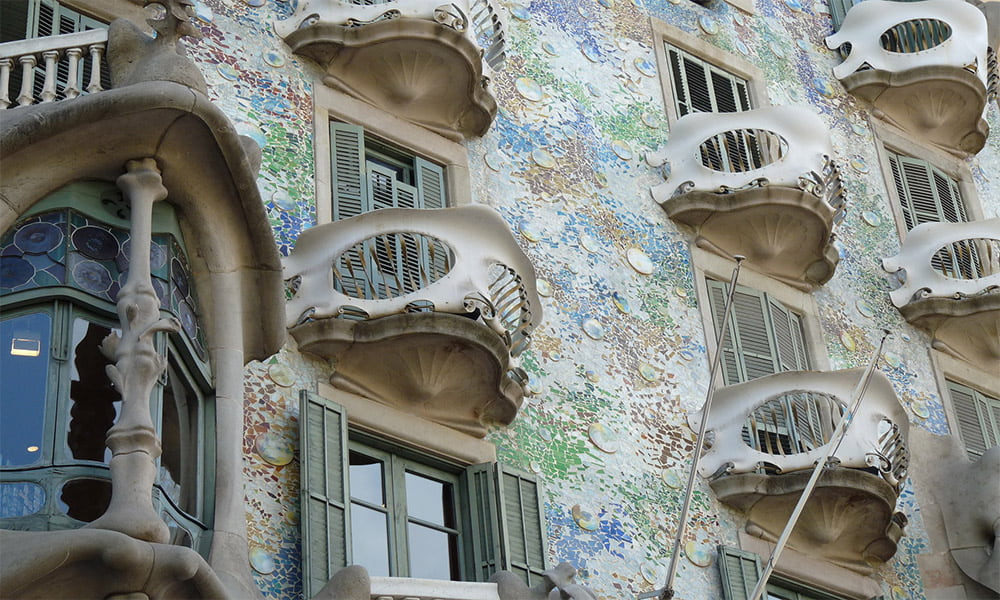
LA SAGRADA FAMILIA
Without a doubt, the best-known work of art by the architect is the Sagrada Familia. This imposing expiatory temple that is still under construction today is one of the most visited monuments of the city of Barcelona and, obviously, one of the most spectacular. Not only is it impressive to see the details of its overwhelming facades, but the visit to the interior of Antoni Gaudí’s temple will leave you with your mouth open. Its thick and infinite columns will transport you to a forest illuminated to perfection by its beautiful and detailed windows, while the visit to its crypt will take you to know the work of Gaudí’s art in depth thanks to the museum located in this room. You also have the option of climbing the towers that crown the building, with their narrow spiral staircases, which will give you views of the city that will take your breath away. To get there, you must take the metro to the Sagrada Familia stop (metro L5). We recommend renting the audio guide to know about all the symbols that this work hides and not miss any of the details found in this piece of Gaudí art.
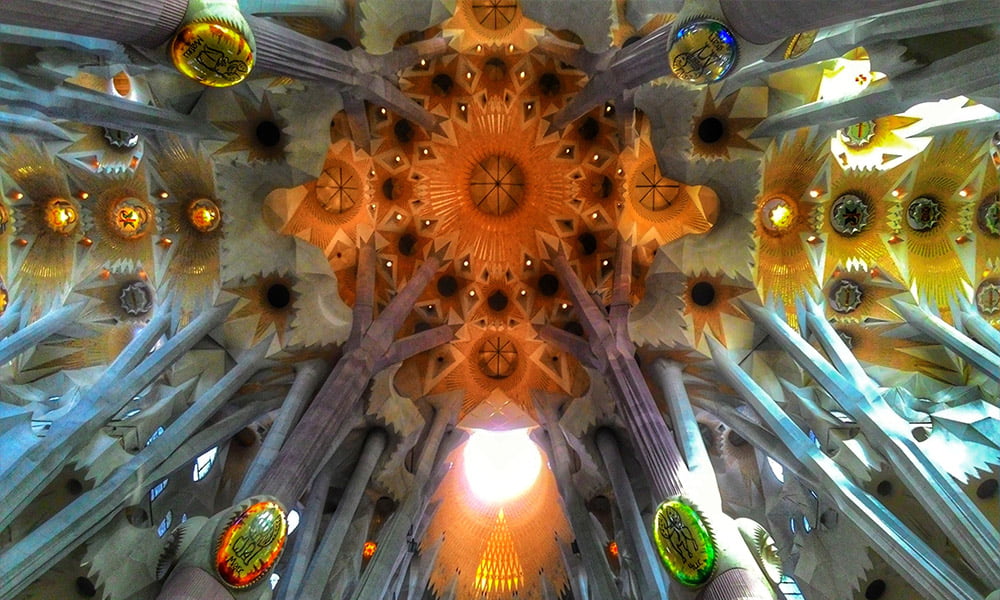
PARK GÜELL
In the heights of Barcelona, we find the most famous park in the city and one of the most magical works of the modernist architect. Located on the hill of Carmel, Park Güell was thought of as a private urbanization for wealthy families in the Catalan capital, although it was finally inaugurated as a public park in 1926, after the original idea failed for several reasons. Although houses were barely built (among them, Gaudí’s house), there are still the monumental and sculptural elements that the architect designed for Park Güell, precisely those that have turned it into one of the most photographed places: the precious salamander fountain on the steps and the benches on the viewpoint, decorated with his famous trencadís (broken ceramics mosaic). All of them are already a symbol of the city of Barcelona.
Although the general entrance to the monumental Park Güell is charged, you should know that the rest of the park can be visited for free. To get there, take the metro line L3, stopping at Lesseps or Vallcarca. You should know that if you go by metro you must walk 20 minutes to get to the park, so we recommend you take the bus number 24, which leaves from Plaza Catalunya and drops you off right in front of the park.
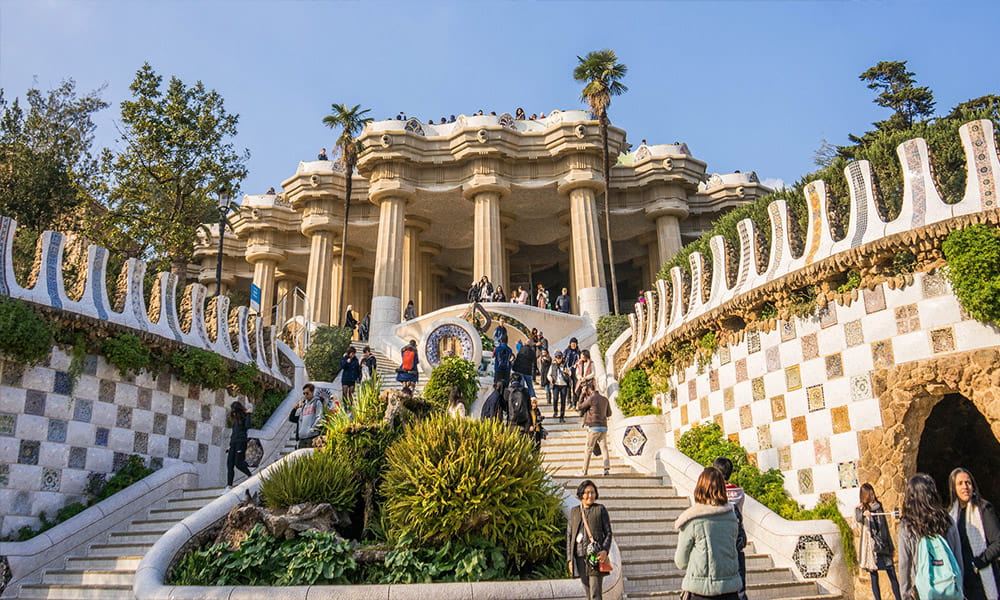
TORRE BELLESGUARD O CASA FIGUERAS
Declared of Cultural Interest, this work is located at the foot of Collserola and is one of the least known buildings by Gaudí in Barcelona. Framed in what is called the Gothic era of the architect, this piece of Gaudí art has only been open to the public since 2013. The attic is built in Catalan vault and the colourful windows of the building stand out above all. If you want to visit the Bellesguard Tower, which could be part of our list of little-known places of charm in Barcelona, you must take Ferrocarrils Catalans train (L7 of FGC) in Plaça de Catalunya, get off at the Avinguda Tibidabo stop and take the 123 or 197 bus. You can get a ticket with audio guide or take the guided tour. The house is open to the public from Tuesday to Sunday from 10:00 a.m. to 3:00 p.m.
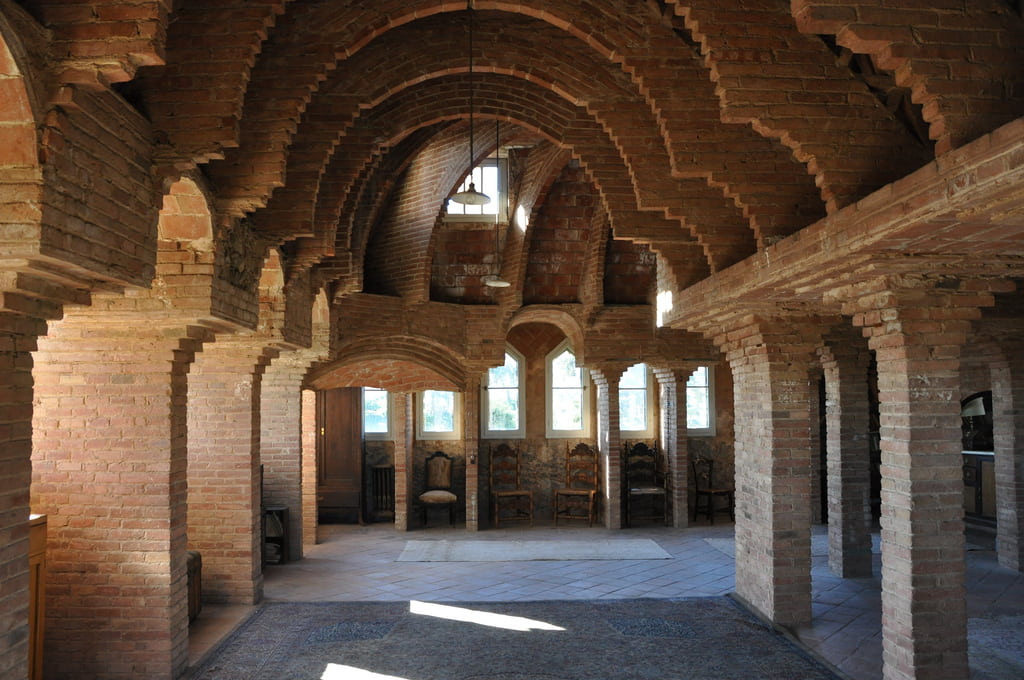
CASA VICENS
This summer house was the first great commission of a young Antoni Gaudí in 1883. Located in the Gràcia neighborhood, this construction combines the most important elements of the modernist style and transmits a certain Neo-Mudéjar air. More than 130 years after its construction, Casa Vicens opens its doors to the public, who will be able to see one of Gaudí’s early architecture pieces and how it influenced his later creations. To get to Casa Vicens, take the metro (L3) and get off at Fontana or Lesseps. The house is located on carrer de les Carolines, less than 300 m from both stops. It can be visited from Monday to Sunday, from 10:00 a.m. to 8:00 p.m.
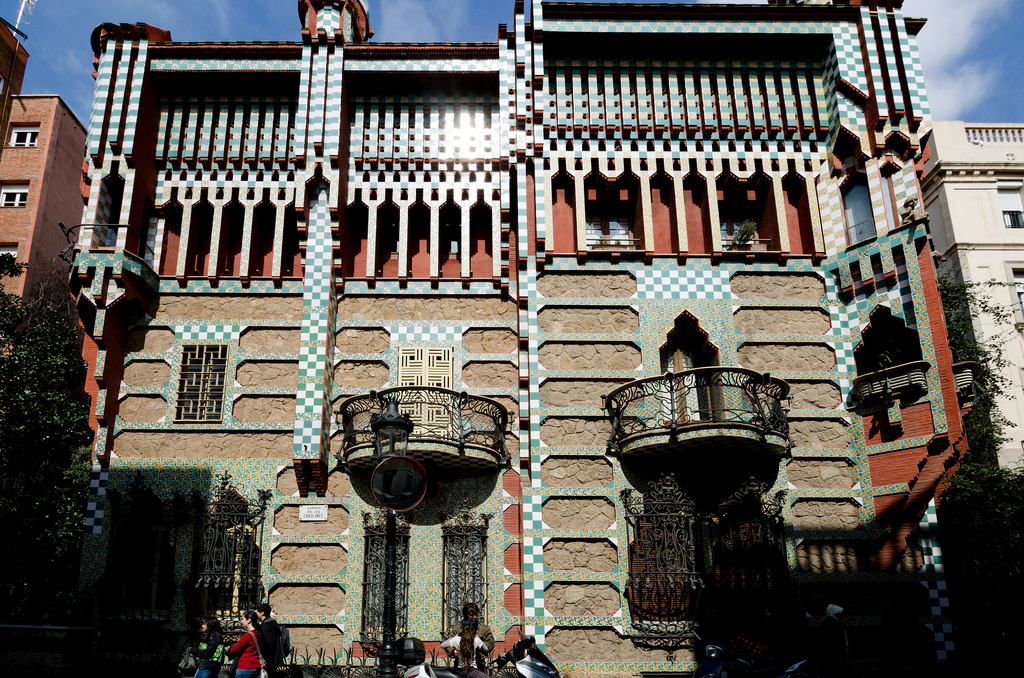
PALAU GÜELL
Another piece of Gaudí art in Barcelona that often goes unnoticed is this wrought iron marvel, which is in the Raval neighborhood. The building was commissioned by businessman Eusebi Güell, who wanted the Catalan architect to build his home in the areas adjoining his family residence. This is another of the architect’s Arabic-inspired creations, and stands out, among other things, due to the magnificent chimneys on the roof, which Gaudí conceived as sculptures. The interior of the building is open to the public from 10:00 am to 8:00 pm in summer, and from 10:00 am to 4:30 pm in winter. You can easily get there by taking the green metro line, getting off at the Liceu stop (L3).
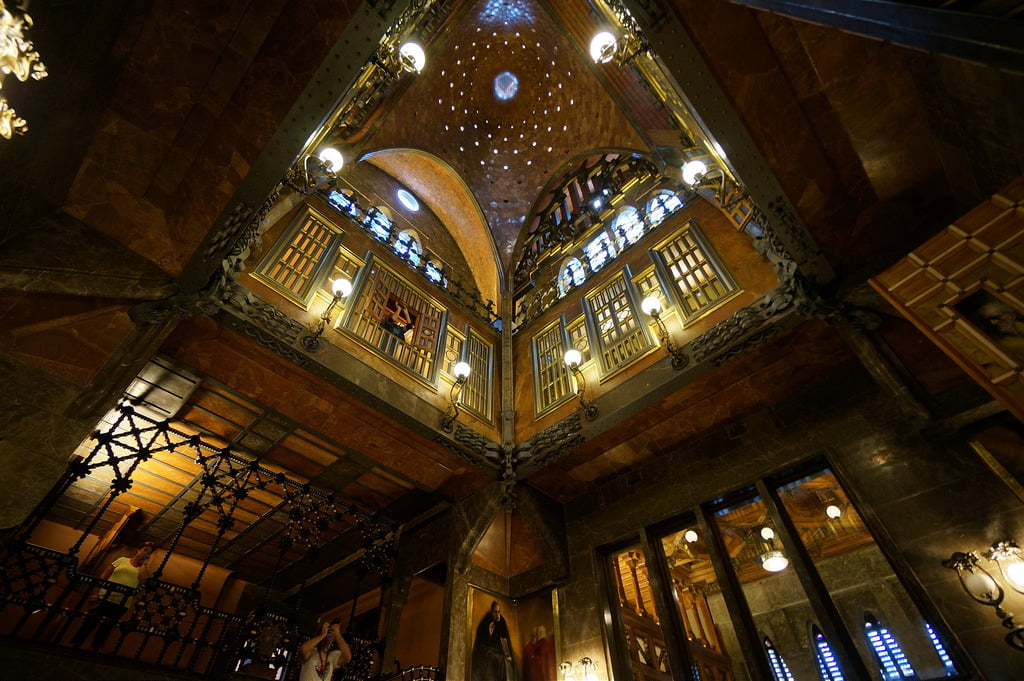
THE TERESIANAS SCHOOL
This old convent was built by Antoni Gaudí in 1890 and concieved as a convent for the Congregation of Teresian nuns. Inspired by Catalan Gothic architecture, he was austere in its construction to reflect the vow of poverty of the congregation, so it is mainly made of brick. Even so, we can see some characteristic elements of his work in its corridors such as the parabolic arches or its pinnacle in the form of a four-pointed cross.
It is currently a private school, so its interior is not open to the public. In spite of that, if you want to contemplate its façade you can get to the school by taking the L6 of the FGC in Plaça de Catalunya and get off at the La Bonanova stop. You can also arrive with bus lines 14, 58, 64 and 70.
CASA CALVET
One of the pieces of art that goes unnoticed in Barcelona is Casa Calvet, one of the most austere buildings created by the architect. Although it is categorized within his naturalistic stage, it is one of the most sober and balanced. Since this building currently consists of a shop and private residences, its interior cannot be visited. If you want to discover all the small elements that make up its façade, you can go to Calle de Casp, 48 to the L1 of the metro (Urquinaona stop).
PLAÇA REIAL LAMPPOSTS
Once we have finished with Gaudí’s buildings in Barcelona and his most important constructions, let us now talk about the rest of his art that we can find in the city. These lampposts were the first commission to the young architect by the town hall. They are made of wrought iron and have six arms. Although Gaudí also designed some with three arms, these are in front of the Civil Government’s building.
FINCA GÜELL PAVILLIONS
Gaudí’s teacher, Joan Martorell i Montells, was commissioned to build an estate for the Güell family. He himself commissioned the architect to build two pavilions and the entrance to the family’s estate. Its magnificent wrought iron fence stands out, where a majestic guardian dragon watches the entrance door. You can see the pavilions approaching Pedralbes through L3, stopping at Palau Reial. Only guided tours of the buildings are available by telephone, on Saturdays and on Sunday mornings.
FOUNTAIN OF HÉRCULES (PALAU DE PEDRALBES)
In the same precinct where the Güell family formerly had their estate you will find the fountain of Hercules, now the center of the gardens of the Royal Palace of Pedralbes. It is a minor piece of art but one that already reflects the character of the artist. Like the pavilions, you can get to the fountain with the L3 of the metro, stopping at Palau Reial. The royal gardens can be visited from 10:00 a.m. to 7:00 p.m. in winter and from 10:00 a.m. to 9:00 p.m. in summer, except for the days when the venue hosts institutional events.
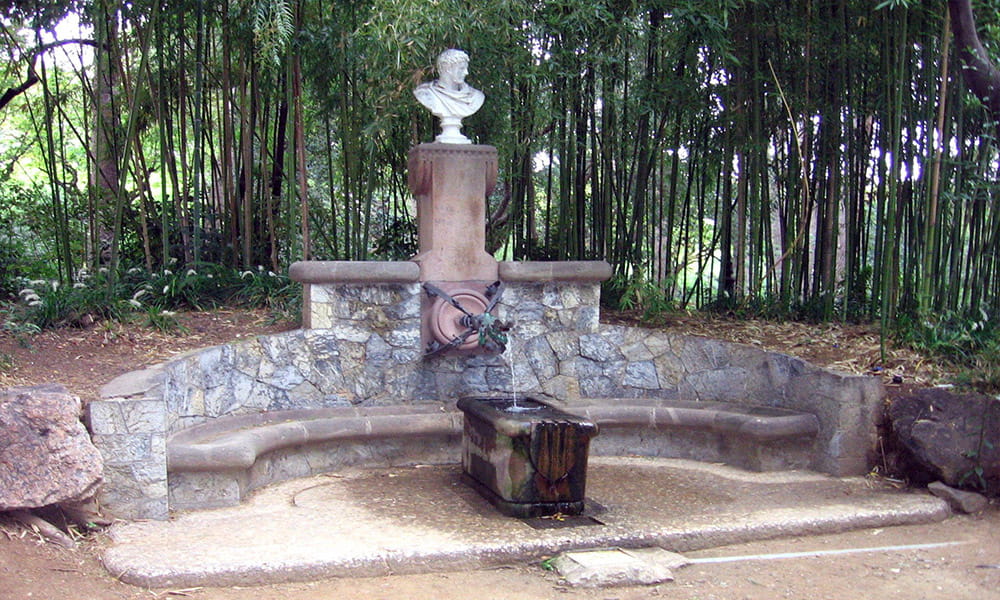
PORTAL MIRALLES
This access door was built by Gaudí shortly after finishing Casa Calvet. A construction entrepreneur who had collaborated with Gaudí in several of his works asked him to build his house. Starting with the portal in a wavy form and decorated with trencadís, his contribution to the building finally did not go beyond the entrance. You can visit the portal on the Manuel Girona 55, getting off at the Maria Cristina stop on L3 of the metro.
SANT PACIÀ CHURCH MOSAIC
Many do not know that one of Gaudí’s first works of art was in this church in the district of Sant Andreu. It is a mosaic of neoclassical style, very distant from his later works, which the architect created for the church along with other elements. Unfortunately, only this mosaic survives today, since the rest of the elements created by Gaudí as a student were lost during the Tragic Week of 1909. The parish is located on carrer de les Monges 27, and you can get there by subway at the Fabra i Puig stop (L1).
OTHER PLACES TO SEE GAUDÍ ART IN BARCELONA
If you want to look at Gaudi’s furniture pieces, the MNAC museum holds a permanent exhibition where you’ll find his most iconic pieces such as benches, fireplaces and more interior design elements.
Other works of Gaudí art in Catalonia that are near Barcelona are the Güell crypt (in Santa Coloma de Cervelló, a monument declared a World Heritage Site by UNESCO), the Cooperativa Obrera Mataronense (Mataró) and Bodegas Güell (Sitges). In Montserrat, you will also be able to find a statue created by him too! Do not forget to check out our article about what Gaudí was inspired by if you want to know more about this incredible artist.
If you have visited one or all the works mentioned in this article, do not hesitate to leave us a comment explaining how your experience was. We want to know which one your favorite is!

